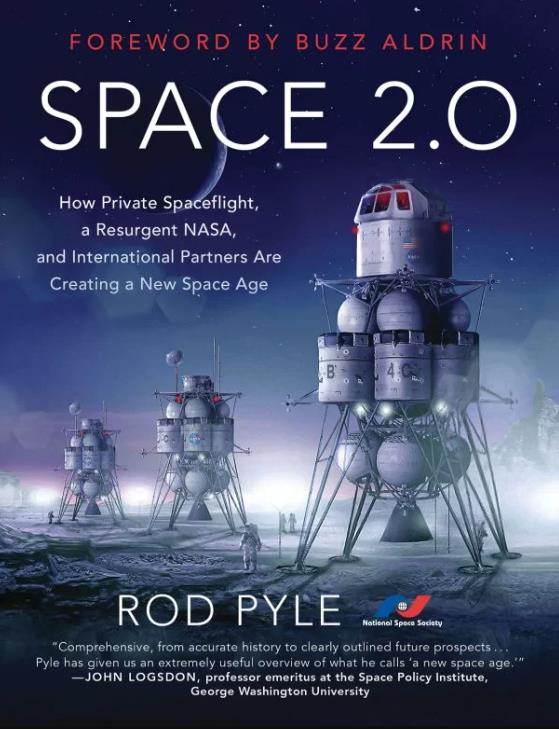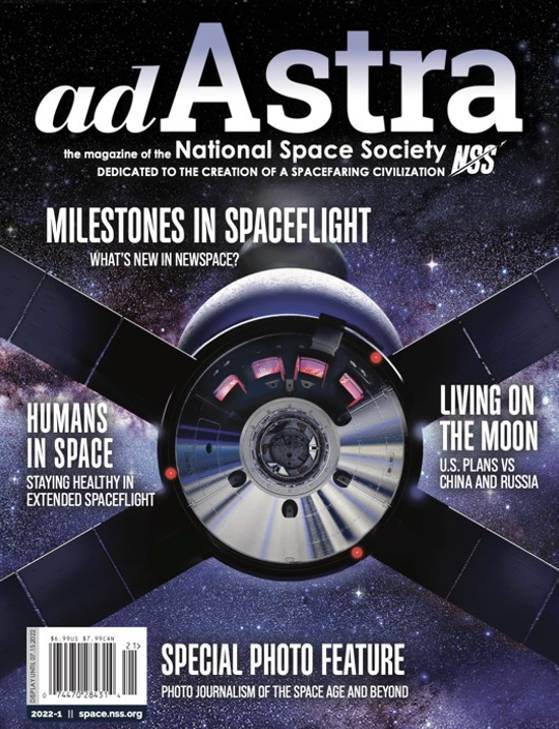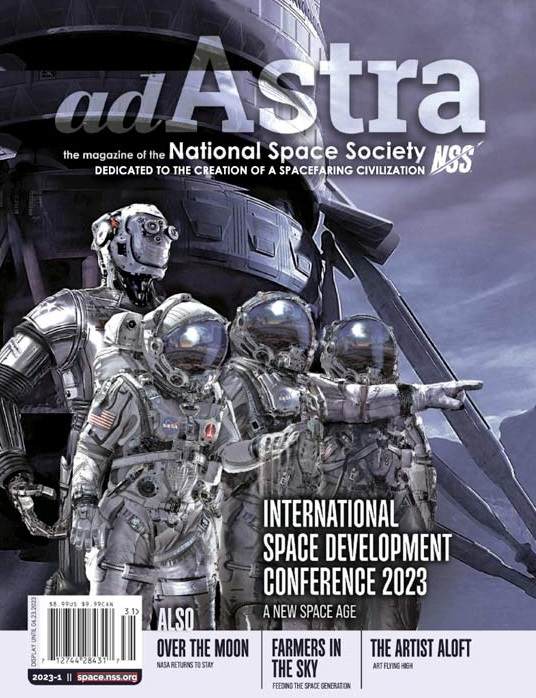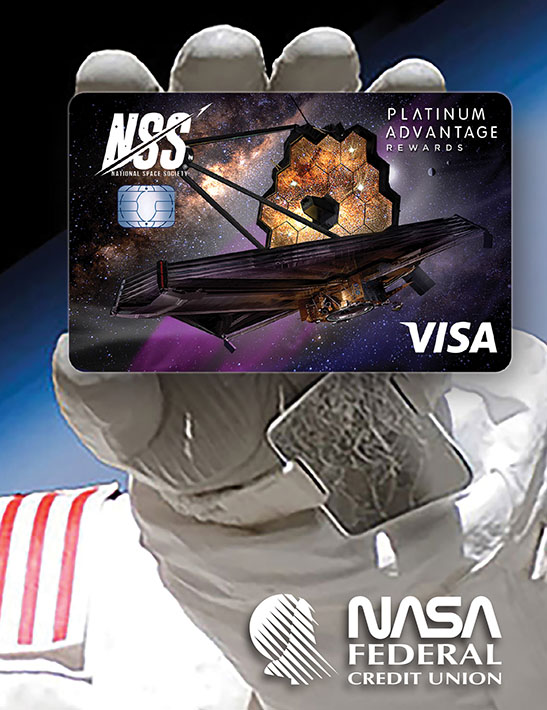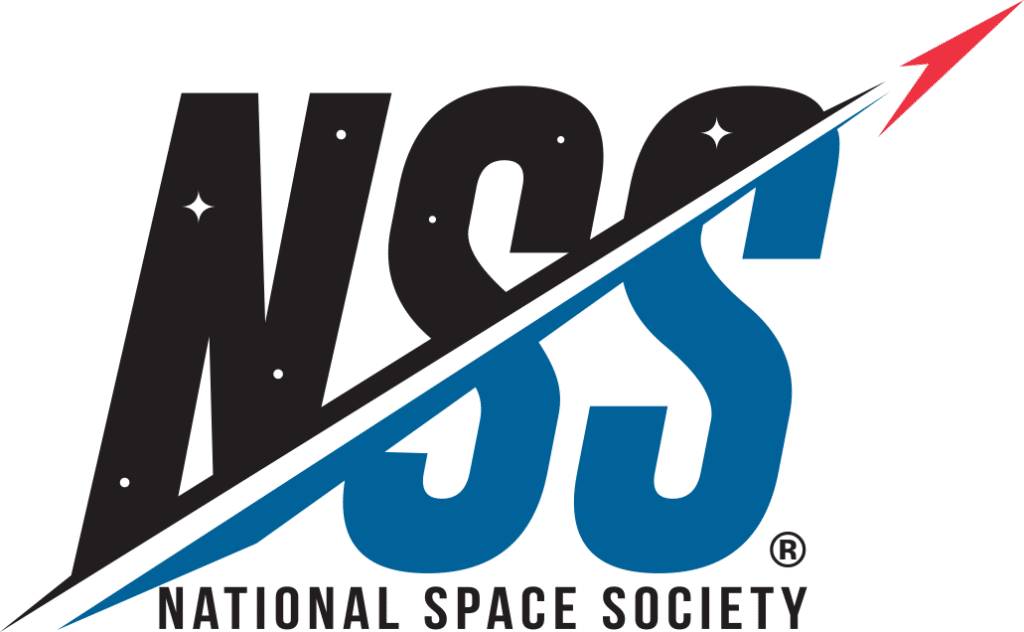- Aldrin, Buzz. Look to the Stars (2009). Aldrin puts the accomplishments of Apollo into the personal and historical context of the human quest to reach the stars.
- Aldrin, Buzz. Reaching for the Moon (2005). Captures the spirit of Apollo 11 astronaut Buzz Aldrin, a genuine American hero who shows how to pursue dreams with determination, strength, and persistence.
- Aldrin, Buzz, with Marianne Dyson. Welcome to Mars: Making a Home on the Red Planet (2015). A high-quality, thoughtful, and clearly written book that encourages young people to build a settlement on the planet Mars.
- Bechard, Margaret. Spacer and Rat (2005). Engaging story of two young people on a space colony in the asteroid belt; impressive job of creating a complete fictional world.
- Bennett, Jeffrey. Max Goes to Mars (2006). Max the dog joins a crew searching for life on Mars, making for a fun and educational story that all future Martians are sure to enjoy.
- Bennett, Jeffrey. Max Goes to the Moon (2003). Max the dog visits the Moon in a scientifically-accurate and a wonderfully-illustrated book for young children.
- Bennett, Jeffrey. Max Goes to the Space Station (2013). Kids can learn about the ISS from a book that actually went to the ISS!
- Bortz, Fred. Astrobiology (2007). This informative introduction to the fascinating topic of possible life on other worlds provides an appropriate level of background and detail.
- Bortz, Fred. Seven Wonders of Exploration Technology (2010). Enticing introduction to the man-made wonders that expand our knowledge of Earth and space.
- Bova, Ben, and Michael Carroll, Jim Denney, Marianne Dyson, Brian Enke, Tom Hill, Rebecca Rowe. The Callahan Kids: Tales of Life on Mars (2013). Ten short stories about three teen/tweens who get into all sorts of mischief at a near-future Mars settlement.
- Bredeson, Carmen. NASA Planetary Spacecraft (2000). Provides kids a great introduction to the planets and moons in our solar system via images returned by spacecraft.
- Brin, David. Sky Horizon (2007). A back story for an upcoming series, Colony High, about teenagers struggling to survive on another world.
- Carson, Mary Kay. Beyond the Solar System: Exploring Galaxies, Black Holes, Alien Planets, and More – a History with 21 Activities (2013). Excellent resource for kids on the development of astronomical knowledge.
- Carson, Mary Kay. Exploring the Solar System (2008). A solid history, full of information, stories of scientists, lovely photographs, and some worthwhile activities.
- Carson, Mary Kay. Mission to Pluto (2017). Outstanding group biography including profiles of the New Horizons mission team members and the dwarf planet itself.
- Chaikin, Andrew. Mission Control, This Is Apollo (2009). Excellent text and the art work of Apollo astronaut Alan Bean create a powerful combination.
- Chrismer, Melanie. Mars (Updated Edition) (2008). A great first introduction to the red planet for new readers.
- Daley, Michael J. Shanghaied to the Moon (2007). An excellent science fiction adventure appropriate for middle grade and young adult readers.
- DeCristofano, Carolyn Cinami. A Black Hole Is Not a Hole (2012). Excellent factual book about these mysterious objects, beautifully illustrated by Michael Carroll.
- DuPrau, Jeanne. The City of Ember (2004). Two preteens struggle to find a way past the unbroken blackness that surrounds their self-contained city before the generator that sustains them fails.
- Dyson, Marianne. Home on the Moon (2003). Describes the resources on the Moon and walks students through what it would take to establish a lunar settlement, while adeptly providing young readers the technical information required in real-life terms they can easily understand.
- Dyson, Marianne. Space Station Science (2004). A must for families with space-happy kids. With easy-to-understand explanations and wonderful illustrations, it covers getting there, coming home, and everything in between.
- Dyson, Marianne. Welcome to the Moon (2019). Motivate the younger generation with this informative roadmap of lunar settlement.
- Floca, Brian. Moonshot: The Flight of Apollo 11 (2009). Liftoff with the crew of Apollo 11 and enjoy an utterly captivating first journey to the Moon.
- Fox, Karen C., and Nancy Davis. Older than the Stars (2010). Illustrates on several levels how your child is made of stuff that has existed since the beginning of the Universe.
- Graham, Ian. You Wouldn’t Want to Be on Apollo 13! (2003). An account of the ill-fated Apollo 13 mission that is both nail-biting and humorous.
- Hadfield, Chris, with Kate Fillion. The Darkest Dark (2016). Inspired by the childhood of a real-life astronaut, this book encourages readers to dream the impossible.
- Hall, Loretta. Miguel and Michelle Visit Spaceport America (2017). This book captures the experience of two children on a school field trip to New Mexico’s Spaceport America.
- Hall, Loretta. Out Of This World: New Mexico’s Contributions to Space Travel (2011). From Goddard’s early rockets to a modern spaceport. For young adult to adult.
- Halpern, Paul. Faraway Worlds (2004). Explore and imagine living on worlds around distant stars through this fantastically illustrated and superbly written book.
- Hehner, Barbara. First on the Moon (2000). This book provides an up-close look at what an astronaut would see from the surface of the Moon, and also an excellent source of historical information for young students.
- Hickam, Homer. Crater (2013). Crater is the name of a 16-year-old miner who must trek a thousand miles across the Moon in the company of his boss’s granddaughter.
- Hunter, Ryan Ann. Robots Slither (2005). A rhyming picture book that provides an overview of the types of modern robots and is fun to read, with sidebars that provide plenty of facts that should entice kids to embrace a future full of friendly robots.
- Jackson, Ellen. The Mysterious Universe: Supernovae, Dark Energy and Black Holes (2008). The best way to learn about supernovae, dark energy and black holes.
- James, Thomas L., and Carl C. Carlsson. In the Shadow of Ares (2010). A Kindle e-book about the first child born on Mars who, at age 14, tries to uncover a mystery.
- Kerley, Barbara. Greetings from Planet Earth (2007). This excellent novel about life, war, and space is full of great science detail and important issues for young people to consider.
- Kolar, Bob. Astroblast: Moon Stone Mystery (2010). Uses a cute space setting to encourage children to read and engage them in activities that help build observational skills.
- Koppes, Steven N. Killer Rocks from Outer Space: Asteroids, Comets, and Meteorites (2003). Read this book and become an “armchair expert” on asteroid impacts over a weekend.
- Krokos, Dan. The Planet Thieves (2013). A fast-paced space adventure with characters designed to appeal to teen readers.
- Lee, Pascal. Mission: Mars (2013). This wonderfully-illustrated children’s book is packed with clear explanations, fun-to-know facts about Mars, and personal tips about exploration from one of NASA’s top planetary scientists.
- Lendroth, Susan. Hey-Ho to Mars We’ll Go (2019). A captivating version of the classic, The Farmer in the Dell. As an introduction to STEAM (science, technology, engineering, art, mathematics), the book is a valued addition to any family library.
- Lewis, J. Patrick. Galileo’s Universe (2005). An amazing “pop-up” biography of one of humanity’s most important scientists.
- Mandell, Robert, and Larry Niven. Ringworld: A Graphic Novel, Part 1 (2014). A young adults graphic novel adaptation of the first half of Larry Niven’s award-winning novel, Ringworld.
- McGranaghan, John. Meet the Planets (2011). Enjoy a Favorite Planet Competition with captivating illustrations and lively and accurate text for ages 5 and up.
- McGranaghan, John. Saturn for My Birthday (2008). A playful and engaging book about the planet Saturn for young children and their parents to enjoy together.
- McNamara, Margaret. The Three Little Aliens and the Big Bad Robot (2011). An adorable space version of The Three Little Pigs.
- Moss, Jenny. Taking Off (2011). A teenage girl meets Christa McAuliffe in a novel for all young adults interested in history, space, or who are just trying to decide what to do with their lives.
- Murray, Peter. One Small Step: 40th Anniversary of the Race to the Moon (2009). A round book that looks (and feels!) like the Moon.
- Murrie, Steve, and Matthew Murrie. Planet Earth: Guide to the Planet (2009). Excellent resource for young readers to learn about the natural diversity of Earth.
- Nagata, Linda. Skye Object 3270A (2010). Teens bungee jumping from a space elevator, exploring a planet with hostile alien animals, and solving the mystery of how one girl became the sole survivor of an alien attack are all part of this book.
- Pattison, Darcy. Nefertiti the Spidernaut: The Jumping Spider Who Learned to Hunt in Space (2016). The true story of a jumping spider sent to the International Space Station in 2012.
- Prochnow, Dave. 101 Outer Space Projects for the Evil Genius (2007). Not just for kids. There are plenty of projects for adults here too.
- Puttock, Simon. Earth to Stella (2006). Who wants to go to bed when there is a universe to explore?
- Ralles, H. J. Darok 9 (2002). In a future where the human survivors of a devastated Earth live in “Daroks” on the Moon, a scientist holds the key to survival.
- Reid, Peter, and Tim Goddard. LEGO Space: Building the Future (2013). A combination coffee table book and picture story book that tells a tale of humanity’s future spaceward expansion using only LEGO blocks. LEGO building instructions are included.
- Regan, Diane Curtis. Space Boy and His Dog (2015). A young boy and his dog and robot “fly” their cardboard spaceship to the Moon on an imaginative “mission” to rescue a lost cat.
- Reinhart, Matthew. Star Wars: A Galactic Pop-up Adventure (2012). Packed with Star Wars settings, characters, and inventions, providing hours of fun.
- Rockcliff, Mara. Pieces of Another World (2005). A heart-warming story that will educate and excite children to watch the sky for meteors and encourage parents to observe with their children.
- Rollerston-Cummins, Toni. The Seven Stars of Matariki (2008). This picture book is excellent for sharing another culture and also the wonder of the night sky with children.
- Saucier, C. A. P. Explore the Cosmos Like Neil deGrasse Tyson (2015). Part of the book series “A Space Science Jouney,” this book intertwines space science with biographical information about astrophysicist Neil deGrasse Tyson.
- Schorer, Lonnie Jones. Kids to Space (2006). What is the recipe for the ultimate space reference book? Take 6,000 students, 18,000 of their questions, and 83 experts to answer them.
- Slade, Suzanne. Countdown: 2979 Days to the Moon (2018). This beautiful book is a perfect introduction for the younger generation who are not knowledgeable of the seminal Moon landings.
- Slade, Suzanne. Daring Dozen: The Twelve Who Walked on the Moon (2019). A well-done brief summary of the six Apollo missions that took men to the lunar surface—written for 5- to 9-year-olds.
- Steele, Allen. Apollo’s Outcasts (2012). A book for young adults about living on the Moon that gets the science right and includes an engrossing, well-crafted story.
- Stone, Tanya Lee. Ilan Ramon: Israel’s First Astronaut (2003). Engagingly balances the sad reality of the loss of the Columbia crew with the personal story of this upbeat man.
- Suen, Anastasia. Man on the Moon (2002 reprint). In this illustrated book, young readers learn about the exciting Apollo 11 voyage to the Moon by three brave astronauts.
- Swanson, Cidney. Saving Mars (2012). A fast-paced story of a young pilot and her autistic brother who must travel from Mars to Earth to obtain the food they need to survive on the red planet.
- Testa, Dom. The Cassini Code (Galahad Series Book 3) (2010). An enjoyable episode in the continuing saga of the teen crew of the Galahad on their way through space to find a new home for humanity.
- Testa, Dom. The Comet’s Curse (Galahad Series Book 1) (2005). A decent introduction to a scientifically-accurate teen space opera that gets more interesting with each book.
- Testa, Dom. The Web of Titan (Galahad Series Book 2) (2006). Nicely weaves the personal stories of the characters with the actions involved in solving a mystery and averting a threat to the ship.
- Thimmesh, Catherine. Team Moon (2006). With breathtaking photos and a lively text, Team Moon will hold the attention of even the most reluctant reader as it relates behind-the-scene stories of Apollo 11. For ages 10+.
- Turner, Pamela S. Life on Earth – and Beyond (2008). Inspiring account of scientist Chris McKay’s search for life in extreme environments.
- Van Cleave, Janice. Engineering for Every Kid (2007). “Should be a required textbook at every elementary school in the country.”
- Young, Karen Romano. Blast Off Doodle Book (2015). A perfect activity book for future space artists and engineers that will engage kids in imagining their future in aviation and space.

